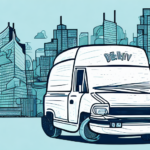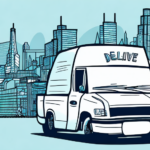The Benefits of a Driving Career
One of the most appealing aspects of a driving career is the opportunity to travel and explore new places. Whether you are a local delivery driver or a long-haul trucker, driving allows you to see different parts of the country and sometimes even the world. According to the Bureau of Labor Statistics, the transportation industry is expected to grow by 5% from 2021 to 2031, ensuring a steady demand for drivers.
Additionally, many driving jobs offer flexible schedules and a reliable income. The independence that comes with driving roles is another significant benefit. Drivers have the autonomy to manage their routes and schedules, which is ideal for those who prefer working independently. Furthermore, many employers provide comprehensive benefits packages, including health insurance, retirement plans, and paid time off, contributing to career stability and security.
Types of Driving Jobs Available
Common Driving Positions
- Delivery drivers for companies such as Amazon or FedEx
- Ride-sharing drivers for platforms like Uber or Lyft
- Bus drivers for public transportation systems or private companies
- Long-haul truck drivers responsible for cross-country freight
- Emergency vehicle drivers, including ambulance and fire truck operators
Specialized Driving Roles
- Chauffeurs serving private individuals or corporate clients
- Armored truck drivers tasked with transporting valuable goods securely
- Race car drivers participating in professional motorsports
- Military vehicle drivers within the armed forces
- Test drivers employed by automotive manufacturers to evaluate new vehicles
Each driving role comes with its unique set of responsibilities and requirements. It's essential to research thoroughly to find the best fit for your skills and career goals.
Qualifications and Requirements for Driving Jobs
While the specific qualifications for driving jobs vary, most positions require a valid driver's license and a clean driving record. For roles that involve operating large vehicles, such as trucks or buses, a Commercial Driver's License (CDL) is typically necessary. Obtaining a CDL usually involves passing both written and practical driving tests.
Employers may also require:
- Background checks to ensure reliability and trustworthiness
- Drug tests to comply with safety regulations
- Physical examinations to confirm fitness for the role
For specialized driving positions, additional certifications might be required. For example, HAZMAT endorsements are necessary for transporting hazardous materials. Gaining relevant experience through previous driving jobs or specialized training programs can also enhance your qualifications.
Driving jobs come with inherent challenges, such as long hours, navigating adverse weather conditions, and managing traffic. Employers look for candidates who demonstrate strong communication skills, the ability to remain calm under pressure, and a solid commitment to safety.
How to Search for Driving Jobs Near You
Finding the right driving job involves leveraging various resources to identify opportunities that match your qualifications and interests. Here are some effective strategies:
Online Job Boards and Career Websites
Company Websites
Visit the career pages of companies you are interested in, such as Amazon or FedEx, to find job postings and apply directly.
Recruiting Agencies
Specialized transportation recruiting agencies can connect you with employers seeking drivers. Examples include Randstad and Manpower.
Networking
Engage with fellow drivers and industry professionals through networking events, online forums, and social media groups. Connections made through networking can lead to job referrals and insider information about job openings.
Job Fairs and Industry Events
Attending job fairs and transportation industry events can provide opportunities to meet potential employers and learn about new job openings. Organizations like the American Trucking Associations often host such events.
Regularly checking job listings and tailoring your resume and cover letter for each application increases your chances of securing a driving position that aligns with your career goals.
Tips for Crafting a Winning Resume and Cover Letter
Resume Building
- Highlight Relevant Experience: Detail your specific driving roles, including types of vehicles operated and any specialized tasks performed.
- Licenses and Certifications: Clearly list your driver's licenses, CDLs, and any additional certifications like HAZMAT endorsements.
- Total Mileage: Mention the total miles driven if applicable, as it demonstrates experience.
- Safety Record: Highlight a clean driving record to emphasize your commitment to safety.
- Technical Skills: Include proficiency with GPS systems, route planning, and vehicle maintenance.
Cover Letter Essentials
- Personalize Your Letter: Address it to the hiring manager and reference the specific job you're applying for.
- Showcase Your Skills: Provide examples of how your experience and skills make you a perfect fit for the role.
- Express Enthusiasm: Convey your genuine interest in the position and the company.
- Address Job Requirements: Directly respond to the qualifications and responsibilities listed in the job posting.
Using keywords from the job listing in both your resume and cover letter can help your application pass through Applicant Tracking Systems (ATS) and catch the employer’s attention. Additionally, maintaining a professional format and proofreading for errors is essential to present yourself as a competent and detail-oriented candidate.
Interviewing for a Driving Job: What to Expect and How to Prepare
The interview process for driving jobs typically includes a combination of phone screenings, in-person interviews, and practical driving assessments. To prepare effectively:
- Research the Company: Understand the company's services, values, and safety protocols.
- Practice Common Questions: Prepare answers for questions about your driving experience, handling difficult situations on the road, and knowledge of traffic laws.
- Review Safety Regulations: Familiarize yourself with industry safety standards and regulations pertinent to the specific driving role.
- Professional Appearance: Dress appropriately and ensure punctuality for your interview.
During the interview, you may be asked to demonstrate your driving skills through a road test or simulation. Be prepared to discuss your driving history openly, including any past accidents or violations. Honesty and transparency are crucial, as employers prioritize safety and reliability.
Additionally, some employers may require background checks and drug testing as part of the hiring process. Ensuring that you meet these requirements beforehand can streamline your application.
Understanding Compensation and Benefits for Driving Jobs
Compensation structures for driving jobs vary widely based on the type of position, employer, and location. Common pay structures include:
- Hourly Wages: Common in local delivery and ride-sharing roles.
- Per-Mile Pay: Typically used in long-haul trucking, where drivers are paid based on the number of miles driven.
- Flat Rates: Fixed payment for specific routes or deliveries.
Benefits often associated with driving jobs include:
- Health insurance coverage
- Retirement plans such as 401(k) options
- Paid time off and vacation days
- Performance-based bonuses
- Vehicle maintenance and fuel allowances (for certain roles)
According to Bureau of Labor Statistics, as of May 2022, the median annual wage for heavy and tractor-trailer truck drivers was $48,310. However, wages can vary significantly based on experience, location, and the specific driving role.
Additionally, roles that require specialized skills or certifications, such as HAZMAT endorsements, often come with higher pay rates. Urban driving jobs may offer higher salaries to compensate for the increased cost of living, while rural positions might provide additional benefits like housing allowances.
Maintaining Health and Safety on the Road
Driver Training and Regulations
Safety is paramount in any driving profession. Familiarize yourself with the specific regulations and protocols related to your job. Employers often provide driver training programs that cover essential safety practices, vehicle maintenance, and emergency procedures.
Staying updated on traffic laws and safety guidelines is crucial. The Federal Motor Carrier Safety Administration (FMCSA) offers resources and updates on regulations that drivers must adhere to.
Staying Healthy on the Road
Long-distance driving can impact both physical and mental health. Implementing healthy habits is essential for maintaining well-being:
- Regular Breaks: Take frequent breaks to stretch and reduce fatigue.
- Nutritious Diet: Opt for balanced meals and stay hydrated to maintain energy levels.
- Adequate Sleep: Prioritize getting enough rest to stay alert and reduce the risk of accidents.
- Physical Activity: Incorporate exercise into your routine to counteract the sedentary nature of driving.
Mental health is equally important. Managing stress through relaxation techniques, staying connected with loved ones, and pursuing hobbies during downtime can improve overall well-being.
Career Advancement Opportunities in the Transportation Industry
The transportation industry offers numerous pathways for career growth beyond driving roles:
- Lead Driver or Supervisor: Take on leadership responsibilities within a transportation company.
- Management Roles: Transition into administrative or managerial positions overseeing operations.
- Specialized Positions: Pursue roles that require additional expertise, such as logistics coordinator or safety manager.
- Entrepreneurship: Start your own transportation business or become an independent contractor.
Furthering your education and obtaining additional certifications can open doors to higher-paying and more prestigious positions within the industry. Engaging in continuous learning and professional development is key to advancing your career.
Building a Sustainable Career in Transportation: Education and Training Options
To establish a long-term career in the transportation sector, consider the following education and training pathways:
- Commercial Driver's License (CDL): Obtain a CDL and pursue specialized training programs to enhance your qualifications.
- Degree Programs: Enroll in degree or certificate programs in transportation management, logistics, or supply chain management.
- Professional Development: Attend industry conferences, workshops, and seminars to stay informed about the latest trends and technologies.
- Networking: Join professional associations and networking groups to connect with industry peers and mentors.
Investing in education and training not only improves your skill set but also increases your marketability and opportunities for career advancement within the transportation industry.
Conclusion
With the transportation industry continually evolving, driving jobs offer a stable and rewarding career path for those who enjoy the open road and value independence. By understanding the various types of driving roles, meeting essential qualifications, and utilizing effective job search strategies, you can successfully navigate the market to find a driving job that suits your lifestyle and career aspirations. Additionally, focusing on health, safety, and continuous professional development will ensure a sustainable and fulfilling career in transportation.






















